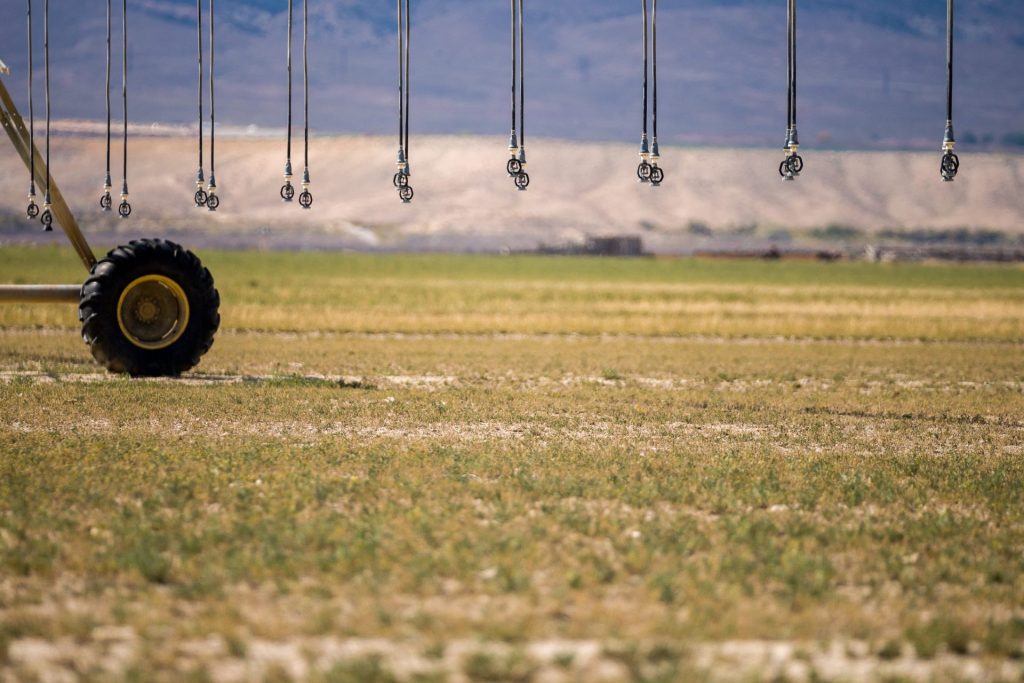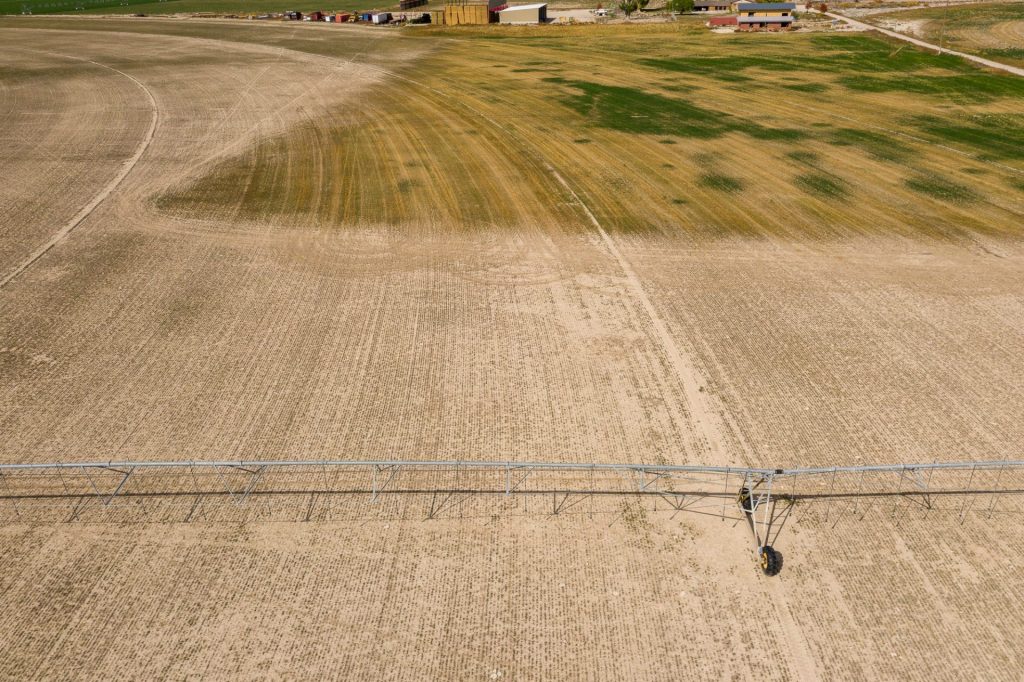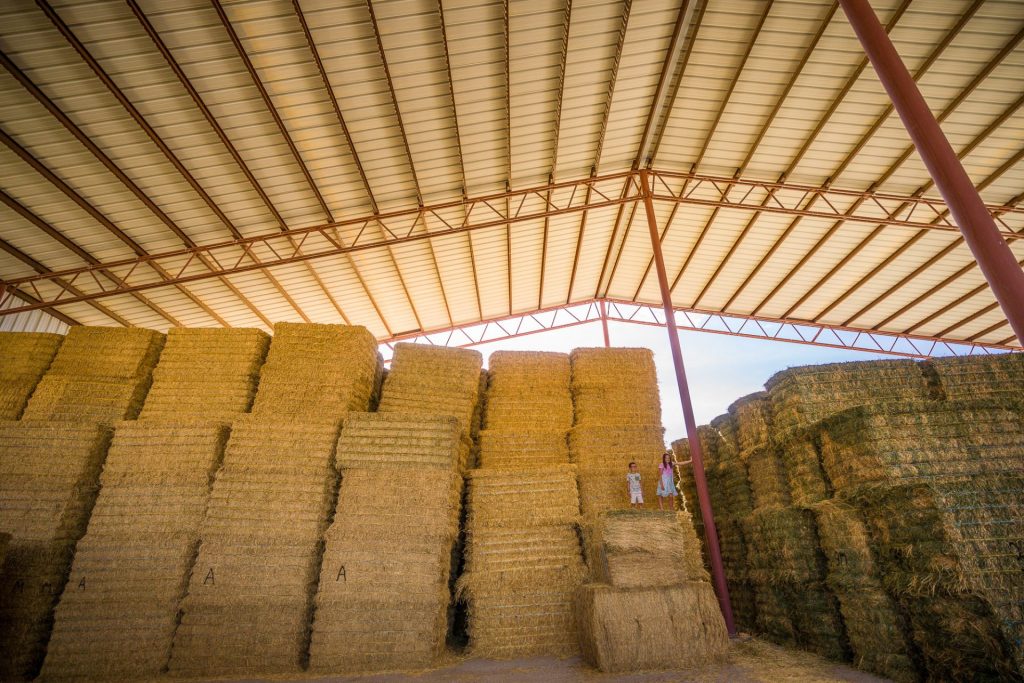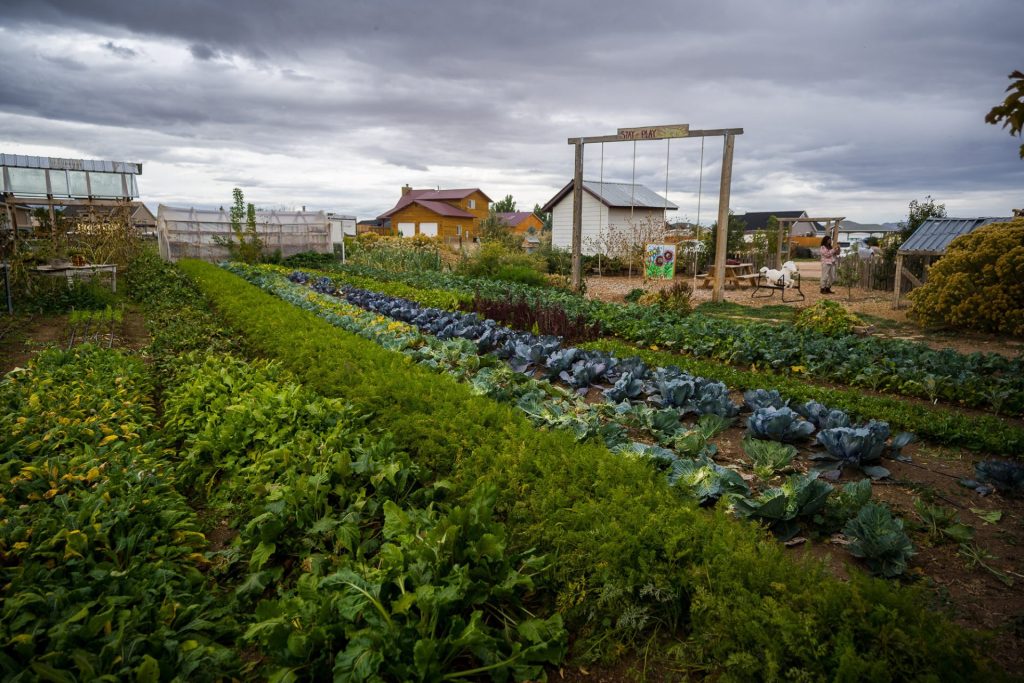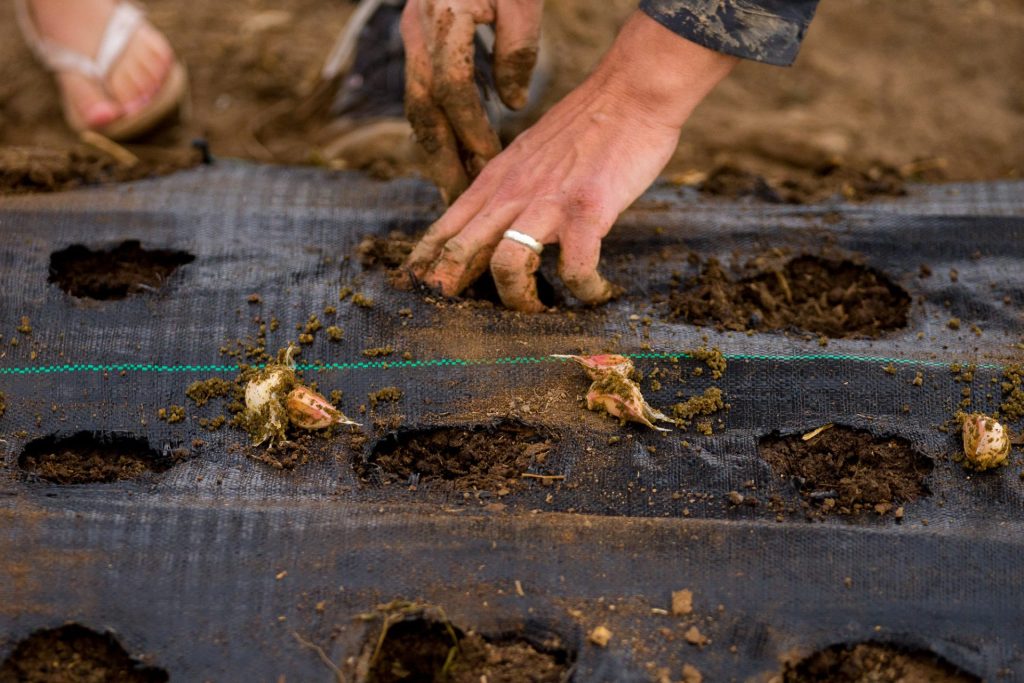A traditional Utah alfalfa farm is radically changing its practices to survive a dry future
By Luke Peterson | Photography by Trent Nelson
This story is part of The Salt Lake Tribune’s ongoing commitment to identify solutions to Utah’s biggest challenges through the work of the Innovation Lab.
[Subscribe to our newsletter here]
Stan Jensen’s land in Centerfield was baked to a brittle alkali crust back in October. Walking across acres of what in a normal year would be green alfalfa, two little shadows chased us.
“Oh, they love it here,” said Jensen, referring to his son and daughter following in our wake and playing with the dormant pivot sprinkler. “Barefoot adventuring, and we don’t have to worry about where they’re at.”
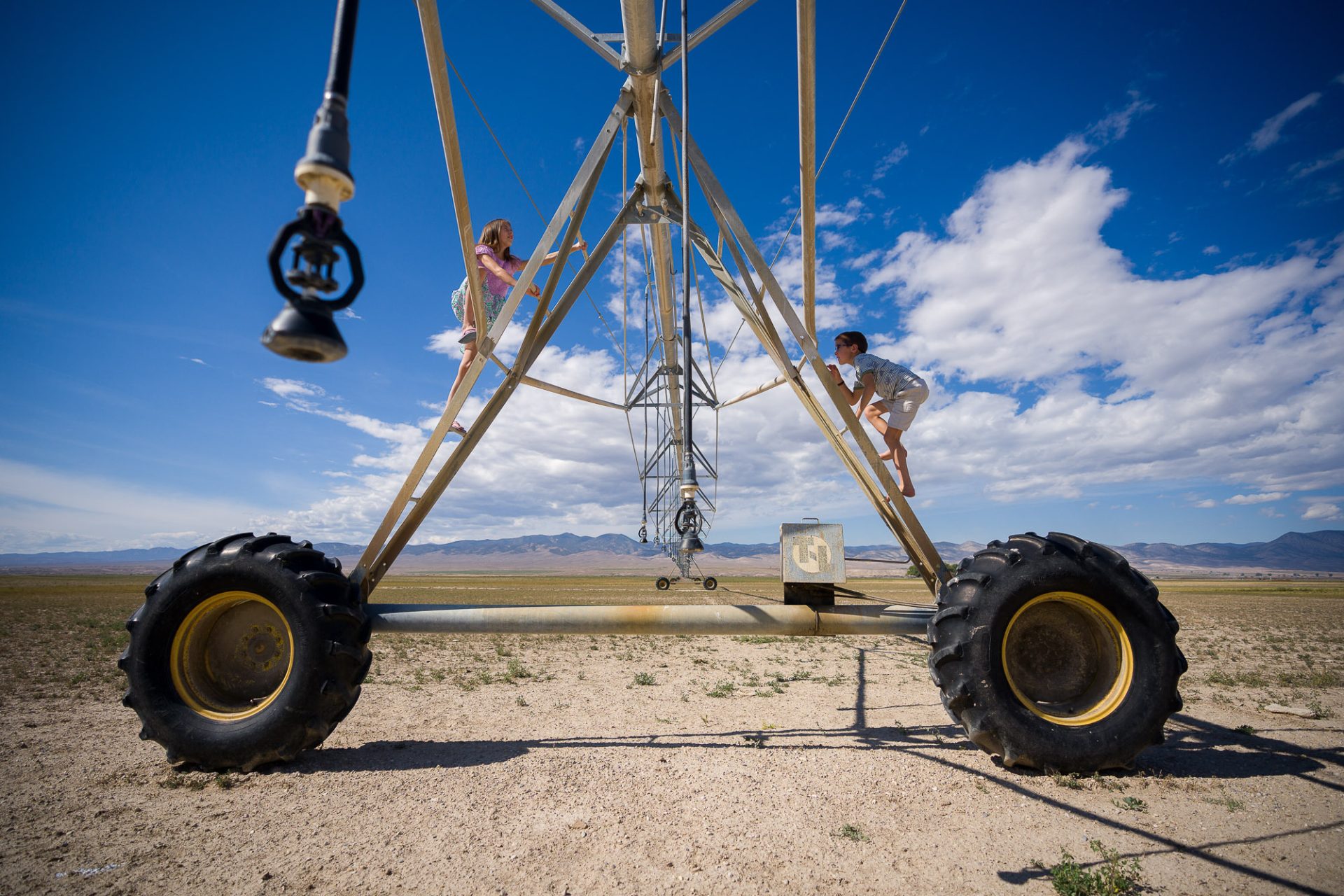
For generations, the Jensen family has farmed several hundred acres in the middle of the Gunnison Valley growing the staple crop of Utah, alfalfa.
After the past few weeks of decent snow and rainfall, it’s easy to forget how parched Utah was just a couple months ago. That is unless you’re a farmer.
Gunnison Valley was hit particularly hard by this summer’s drought, and much of Jensen’s land went unwatered.
“This year was a bad year,” said Jensen standing in his near-empty hay shed, “but we’ve had seven consecutive years of drought. The land banks water, but droughts are cumulative and we’ve been overdrawn for seven years. One good year won’t save us.”
Jensen is a farmer by birth, but an engineer by training. It was his daughter Samantha that brought him back home to the family farm.
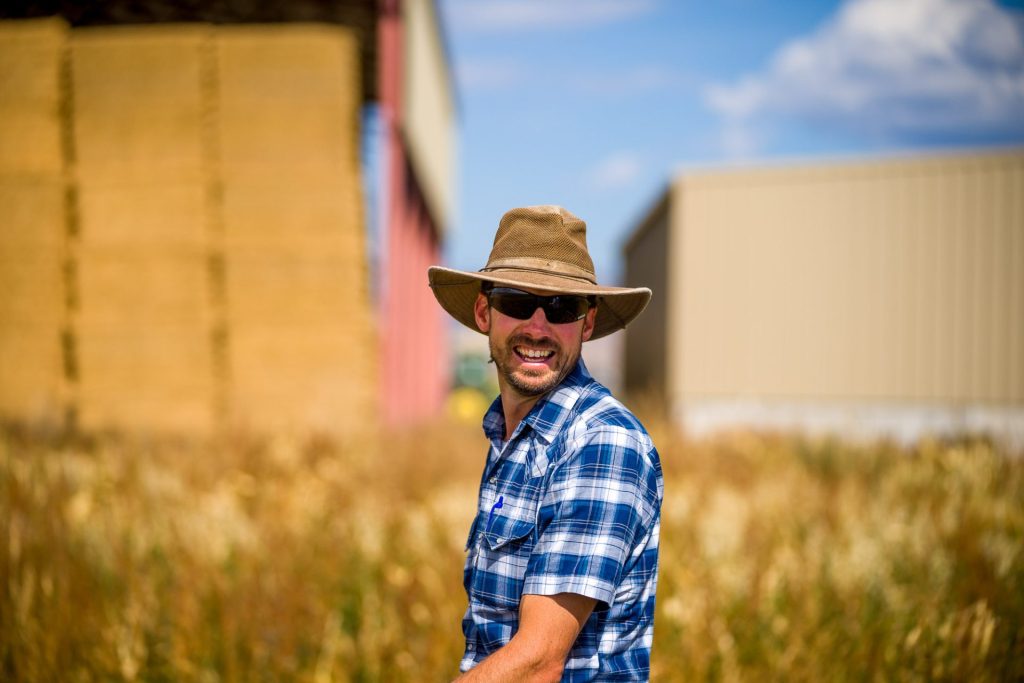
We have to change the way we think about agriculture if family farms are to continue in Utah.
“I wanted the kids to have this experience,” said Jensen, but he worries about whether a future in farming is possible for his children. “We have to change the way we think about agriculture if family farms are to continue in Utah.”
To build a more sustainable future, Jensen is breaking with generations of conventional farming by changing over to best practices drawn from organic farming, permaculture and other sustainable practices.
Jensen believes these practices can help the family farm weather the dry years ahead on several levels.
“There’s not a manual for this,” Jensen said, “I’m sure there are other people further along the path, but unfortunately I don’t know them.”
The 500-acre lab
For Stan Jensen, the big question is how to get more organic material in the ground.
“In terms of drought tolerance, organic material is everything,” said Jensen. “1% of organic material can hold 3 inches of water per foot.”
Monsanto spends a billion dollars a year educating us. Bayer spends a tremendous amount. That’s where our education comes from.
Jensen said his land is at about 2% organic material. “But if I were at 10%, I could be good for a year and survive a drought.”
The organic material comes in the form of Jensen’s 60 head of cattle who graze over the property, turning weeds and dry alfalfa into cow pies. His daughter also contributes with her flock of chickens that are likewise moved systematically over the land, following the cows.
Rather than till the land, Jensen relies on a growing population of cow pie-fed earthworms to work the soil for him. “Before, we’d burn 4,000 gallons of fuel a year just on tilling.”
Under the no-till system, they burn just a couple hundred gallons.
It’s not just returns on water conservation and lower emissions that drive Jensen. By thinking about farming more like direct-to-consumer gardeners who sell their goods at a farmers market, Jensen believes Utah family farms can become not only sustainable for a dry future, but profitable.
“A market gardener can make $4 per square foot,” Jensen said. “Your average farmer makes just over 2 cents per square foot.”
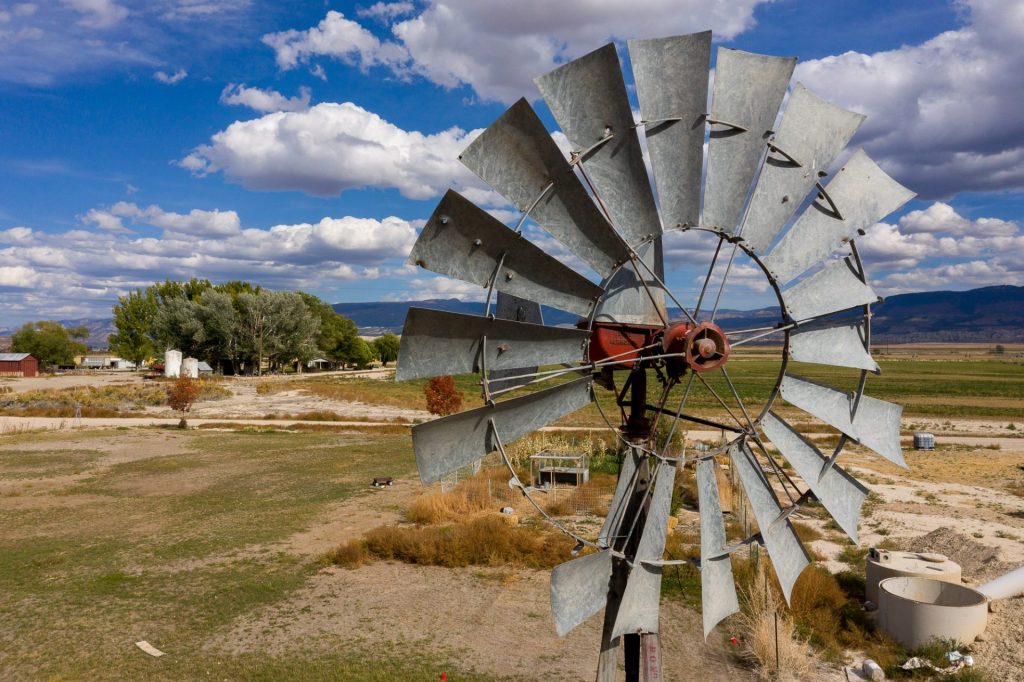
Jensen concedes that market gardening is also more labor intensive, “but clearly there’s a lot of room for improvement.”
When asked why more agricultural producers don’t move toward holistic farming practices, Jensen pointed out again that there is no manual.
“You know who’s educating us?” Jensen said, “Monsanto spends a billion dollars a year educating us. Bayer spends a tremendous amount. That’s where our education comes from.”
The result, for farmers who are often on the verge of financial ruin, is an unsustainable dependence on agricultural tech producers.
Jensen points to the magic of fungus, which is essential for plants to extract minerals from the soil. Jensen says big agriculture tech companies tell farmers, “‘Look, it’s just easier to kill all the fungus. So they want me to go first thing in the spring and spray a fungicide. Then an herbicide, to kill all the plants.”
The result is less and less carbon in the soil from year to year, more and more dependence on tilling, chemical fertilizers and pesticides, and less capacity to retain water from one year to the next, Jensen said.
The Organic way
While the state of Utah provides little education to help agriculture producers adopt more sustainable practices, there are other places they can turn. The Red Acre Center in Cedar City, Utah, serves as a regional education and advocacy center for small farms, organic farmers, and traditional farmers like Stan Jensen who are looking to make the transition.
Red Acre is also a 2-acre organic farm that runs a community-supported agriculture program (CSA) in Cedar City.
“When we started,” director Sara Patterson said, “people used to say, ‘CSA? Confederate States of America?’”
With a CSA, consumers buy shares of a farm’s produce in advance. For Red Acre, it’s about creating community. CSA members are encouraged to volunteer at the farm.
“We still have volunteers come in who have never seen a wheelbarrow,” Patterson said. “We had someone getting a master’s in sustainable agriculture come in who had never used a wheelbarrow before.”
For Patterson, this is a source of both concern and excitement. The disconnect between consumers and the land is part of the reason why food production remains in the hands of large, conventional farmers, she said.
At the same time, she sees the enthusiasm of volunteers reconnecting with food as an encouraging sign for the future, adding, “There’s this super excited generation that wants to learn, they just don’t know how yet.”
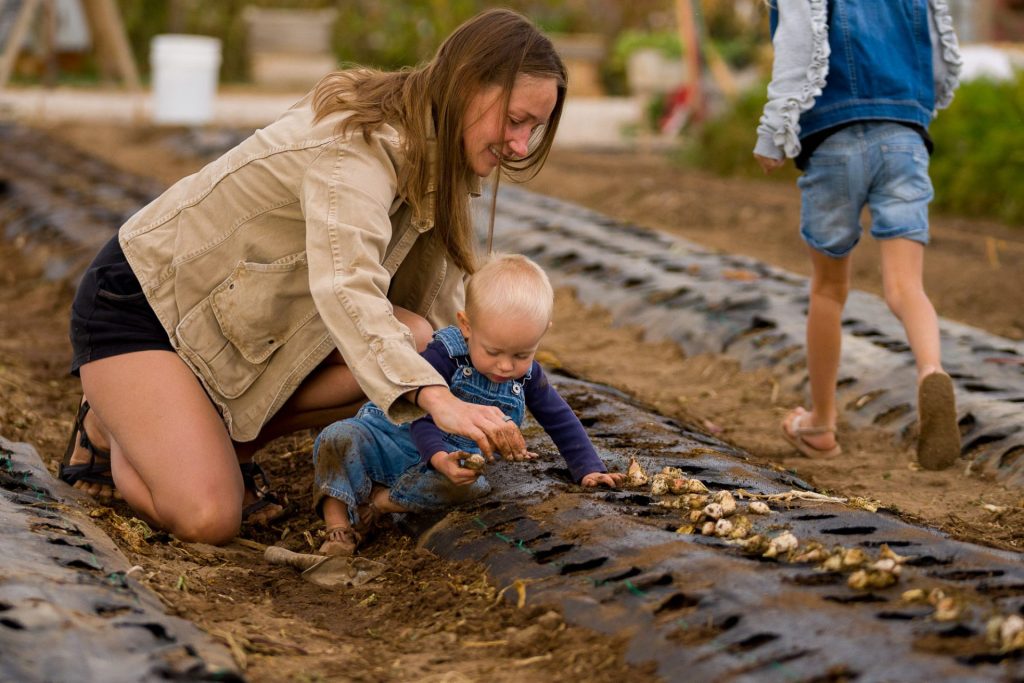
We just need to feed the world.
Patterson speaks from experience. She started Red Acre Farm 12 years ago, at the ripe old age of 14. Her parents, who moved to Cedar City from California seeking a quieter life, are now Sara’s employees at the farm, which has been the family’s sole source of income for the past decade.
The Red Acre Center has a special interest in young farmers, but provides education on organic farming, holistic agriculture and related topics to farmers of all types and generations through events and an annual conference.
“There are the organic farmers,” Patterson said, “who see Monsanto as the devil.” And there are traditional farmers whose view is, “We just need to feed the world.”
“And I think there’s a bridge,” she said.
For Patterson, Stan Jensen exemplifies that bridge: “What he’s doing is amazing. He’s seen that it’s possible, he’s seen what it’s doing to his land…He knows what he’s giving people is a beautiful product and he knows that what he’s leaving his children is going to be better.”
Future of Utah Family Farms
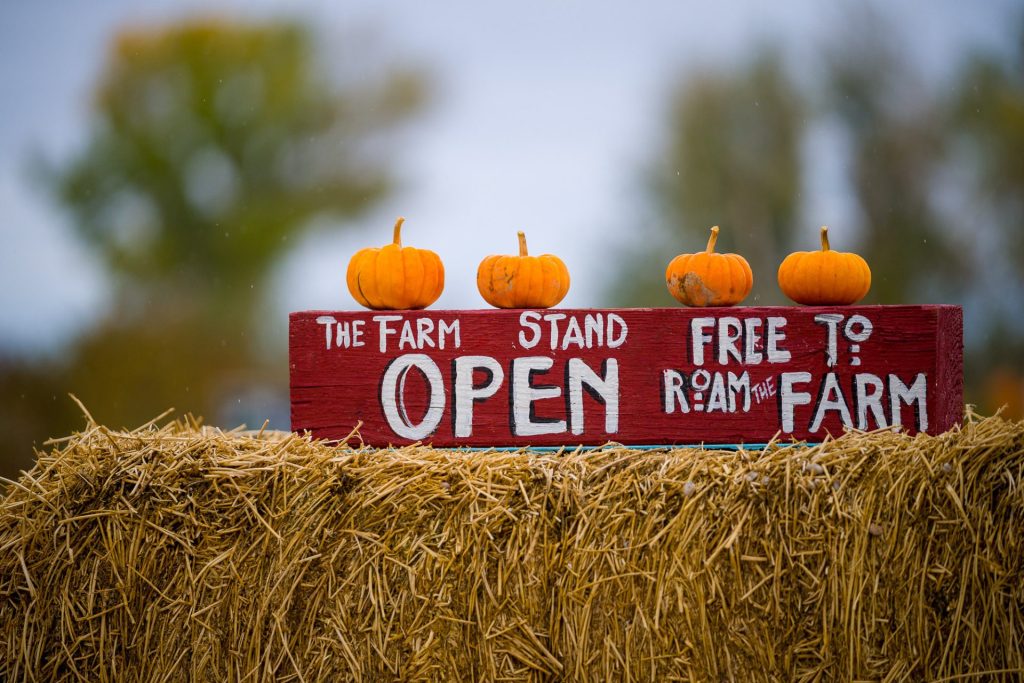
According to the USDA Census of Agriculture, 7,380 farms in Utah grow alfalfa. That’s 40% of the 18,409 farms in the state.Utah farms grow alfalfa for a reason – as a long season crop that develops deep roots, it has the ability to withstand Utah’s harsh high-desert climate. It is also a water hog.
According to a 2020 study, alfalfa and other feed crops account for 32% of all water consumed in the western US and 55% of that consumed in the Colorado River Basin.
While some high-tech Utah companies are experimenting with more water-efficient animal feed, those technologies are far from the reach of struggling family farms.Stan Jensen’s project is one that gets away from the physical and process separation of feed and animals.
“Ultimately I see us primarily doing direct-to-consumer grass-fed beef,” Jensen said.
For Jensen, this means adopting new skills – not only holistic farming practices, but also marketing and branding.
“I’m fine with numbers and accounting,” Jensen said, “But marketing is more an art.” Jensen is pleased, though, that they’ve been adding customers since October under their new business, Sunny Side Up Pastures.
He is cautiously optimistic about this winter’s moisture, but October’s nearly-empty hay shade is still a fresh memory. In the spring the Jensens will see where they stand, and the summer will determine where they end up.
At that point, Samantha Jensen’s chickens will return to their work contributing organic matter to the soil.
“Fifty chickens is nothing major, but it’s her education. She’s learning, and hopefully we can scale this and see success in the future.”
Solutions in Practice
You can learn more about how to adopt sustainable farming or gardening practices at the Red Acre Farm’s Farm Conference, January 13 -15.
Curious what state resources for Organic farming might look like? Here’s what Washington offers.
And here is one of many examples of a state-sponsored, university-based resource center for organic farming thanks to North Carolina State University.

